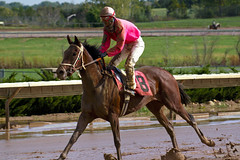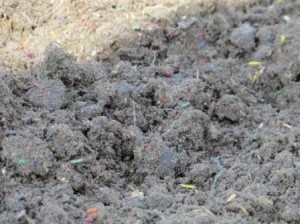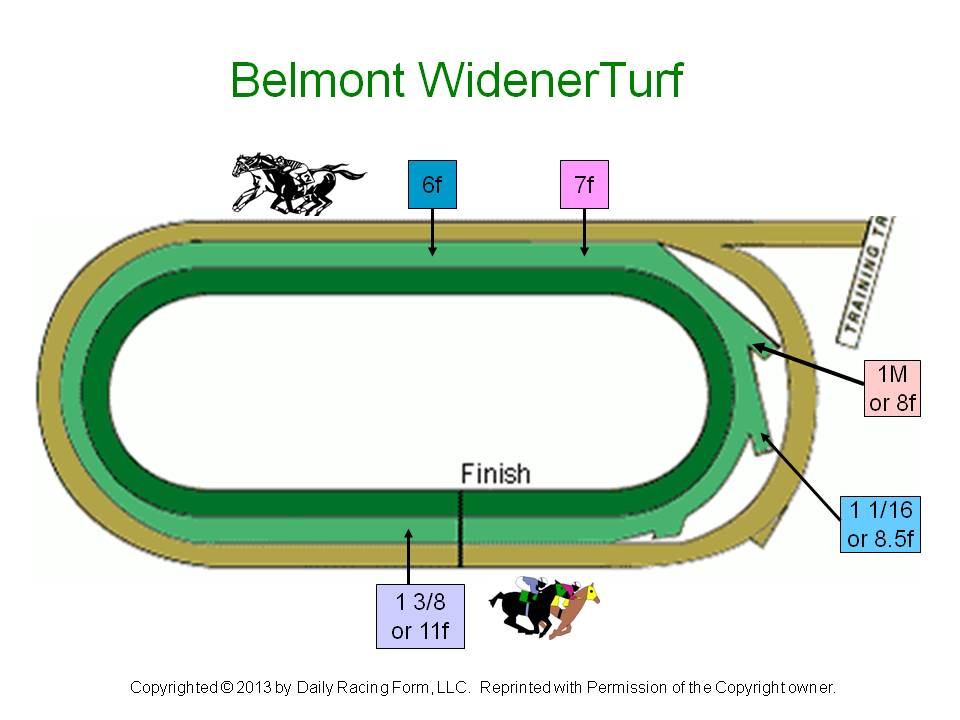May 6
2013

Photo by Alicia Hamm
Track Conditions basically refers to the amount of moisture found in a Race Track. This can vary from being so dry that maintenance crews have to water the surface in order to hold the dust down, to wet enough that puddles of water appear on the racing surface. And of course everything in between.
In this article we will define the various conditions for both Dirt and Turf surfaces, and provide examples of how they are presented in the Past Performances (PPs) of the Daily Racing Form.
Read More >>
May 2
2013
In prior articles we’ve touched on the variety of surfaces that Thoroughbred horses run on at race tracks in North America. The following table describes the articles in case you want to review them again, or missed them the first time around. You can click on the Article Title within each row to read it in it’s entirety.
This article will attempt to pull it all together on the subject of surfaces and also provide some examples on how surface information is presented in the Past Performances (PPs) in The Daily Racing Form.
Read More >>
Apr 30
2013

Having just returned from a visit to Keeneland race track in Lexington, Kentucky, I thought it was a good time to discuss the various surfaces that Thoroughbred horses race on. The traditional surfaces in North America are dirt and grass, with the highest value Stakes races held on the dirt. For example, the Triple Crown is run exclusively over dirt surfaces.
Keeneland however, has a Synthetic surface made of a mixture of silica sand, recycled fibers (carpet and spandex) and recycled rubber/pvc. I took a close-up picture to the right to show it’s unique texture. This picture was taken on a warm and sunny day, with very little moisture in the track. Below is a picture of the stretch run taken the same day.
Read More >>
Apr 22
2013
In the prior post we looked at the two turf courses at Saratoga. Now we’ll look at a few other interesting turf courses in North America. Below is a diagram of the Widener (Outer) turf course at Belmont Park.

Read More >>
Apr 20
2013
Saratoga is a Race Track that has two turf courses located inside of the Main Dirt track. The outer turf course is officially known as the Mellon Turf Course, in honor of the Mellon family (whose members were prominent owners and breeders in the Thoroughbred industry). The inner turf course is located directly inside of the Mellon Turf Course. As far as turf courses go, it is pretty straight-forward with no chutes or extensions like turf courses at some other race tracks.
The following diagram highlights the Mellon Turf course (in light green) and includes the location of the starting gate (in a box) for each distance from 5f to 9.5f.
Read More >>
Apr 18
2013
In a prior article we looked primarily at the Saratoga and Belmont main tracks. Click here to read the article From Furlongs to Ovals (How Distances Vary by Racetrack). Now we’ll look at a few other tracks in North America, and show a comparison chart of the oval size and stretch run distances for the most popular tracks.
First there is Aqueduct, located in New York State.
Read More >>
Apr 16
2013
In an earlier article (What’s a Furlong?) we defined the standard measure of distance in Horse Racing as a furlong. But, how does that furlong translate into races on an actual race track? The first thing you have to realize is that it varies by race track. While the vast majority of race tracks in North America are oval in shape, they are not all the same size, nor the same configuration. It’s kind of like the difference in Major League Baseball parks. Some have a short fence, while others have a big green wall. The number of feet to left, center, and right fields vary. Some ballparks have grass, while others have artificial turf. Many similar variations occur in horse racing.
Read More >>
Apr 11
2013
Webster’s Definition of Handicap:
To assess the relative winning chances (of contestants) or the likely winner (of a contest).
Simple enough. But, as with so many things, the devil is in the details. In his book, Ainslie’s Complete Guide to Thoroughbred Horse Racing, Tom Ainsle writes the following about handicapping horse races:
Read More >>
Apr 7
2013
The standard unit of measure for distance in horse racing is a furlong.
One furlong equals 1/8 of a mile.
Or, put another way, there are 8 furlongs in a mile. Races under one mile are expressed in terms of the number of furlongs. For example, a race that measures 3/4 of a mile, is listed as being 6 furlongs in the racing program. The following diagram demonstrates the translation from furlongs to fraction of a mile.
Read More >>



